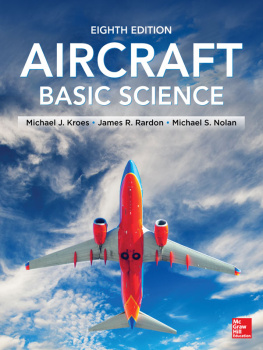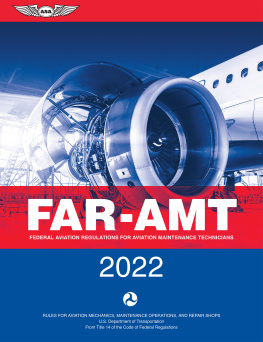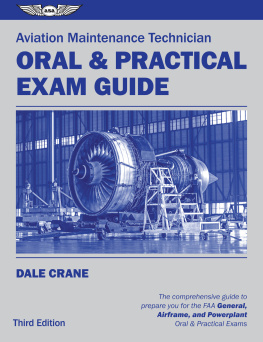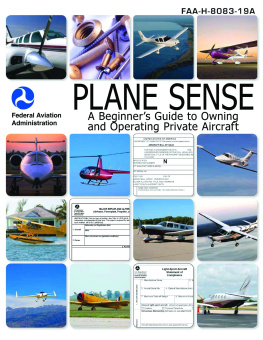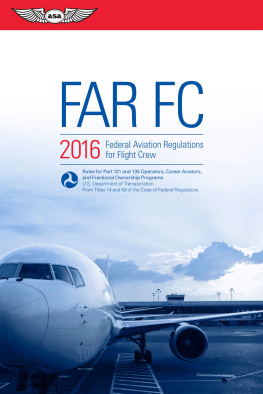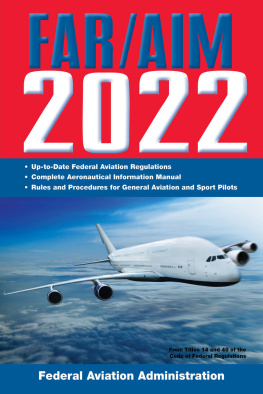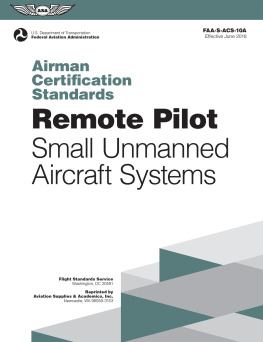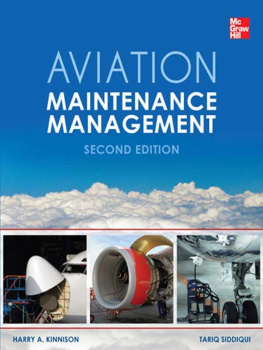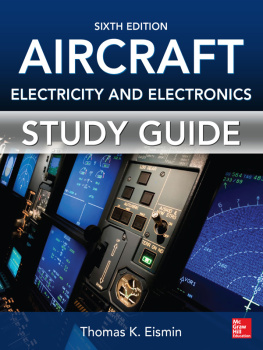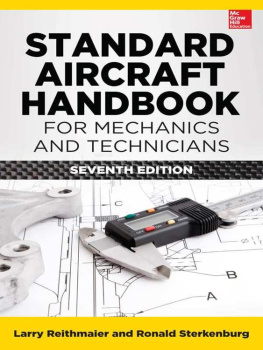About the Authors
Michael J. Kroes has been an aviation practitioner and educator for over 35 years. He has held various FAA certifications, including Airframe and Powerplant Mechanic, Inspection Authorization, Designated Mechanic Examiner, and Designated Engineering Representative, and he holds a commercial pilot license. Mr. Kroes has worked for some of the leading aviation companies, including Raytheon and Allied Signal, and has also spent 25 years as a professor and department head at Purdue University. Recognized as a leading expert on FAA technician certification, he authored a comprehensive study funded by the FAA. This study was used to develop new FAA technician certification content and guidelines. Mr. Kroes resides in Pinehurst, North Carolina.
Michael S. Nolan is a professor and associate department head at Purdue University and has taught there since 1978. He was responsible for the development of new degree programs that provide educational opportunities for students seeking to study aviation management and air traffic control. Mr. Nolan has held various FAA certifications, including Airframe and Powerplant Mechanic, Commercial Pilot, Certified Flight Instructor, and Control Tower Operator. He resides in Lafayette, Indiana.
Copyright 2013 by The McGraw-Hill Companies, Inc. All rights reserved. Except as permitted under the United States Copyright Act of 1976, no part of this publication may be reproduced or distributed in any form or by any means, or stored in a database or retrieval system, without the prior written permission of the publisher.
ISBN: 978-0-07-179918-8
MHID: 0-07-179918-4
The material in this eBook also appears in the print version of this title: ISBN: 978-0-07-179917-1, MHID: 0-07-179917-6.
McGraw-Hill eBooks are available at special quantity discounts to use as premiums and sales promotions, or for use in corporate training programs. To contact a representative please e-mail us at .
All trademarks are trademarks of their respective owners. Rather than put a trademark symbol after every occurrence of a trademarked name, we use names in an editorial fashion only, and to the benefit of the trademark owner, with no intention of infringement of the trademark. Where such designations appear in this book, they have been printed with initial caps.
Information has been obtained by McGraw-Hill from sources believed to be reliable. However, because of the possibility of human or mechanical error by our sources, McGraw-Hill, or others, McGraw-Hill does not guarantee the accuracy, adequacy, or completeness of any information and is not responsible for any errors or omissions or the results obtained from the use of such information.
TERMS OF USE
This is a copyrighted work and The McGraw-Hill Companies, Inc. (McGraw-Hill) and its licensors reserve all rights in and to the work. Use of this work is subject to these terms. Except as permitted under the Copyright Act of 1976 and the right to store and retrieve one copy of the work, you may not decompile, disassemble, reverse engineer, reproduce, modify, create derivative works based upon, transmit, distribute, disseminate, sell, publish or sublicense the work or any part of it without McGraw-Hills prior consent. You may use the work for your own noncommercial and personal use; any other use of the work is strictly prohibited. Your right to use the work may be terminated if you fail to comply with these terms.
THE WORK IS PROVIDED AS IS. McGRAW-HILL AND ITS LICENSORS MAKE NO GUARANTEES OR WARRANTIES AS TO THE ACCURACY, ADEQUACY OR COMPLETENESS OF OR RESULTS TO BE OBTAINED FROM USING THE WORK, INCLUDING ANY INFORMATION THAT CAN BE ACCESSED THROUGH THE WORK VIA HYPERLINK OR OTHERWISE, AND EXPRESSLY DISCLAIM ANY WARRANTY, EXPRESS OR IMPLIED, INCLUDING BUT NOT LIMITED TO IMPLIED WARRANTIES OF MERCHANTABILITY OR FITNESS FOR A PARTICULAR PURPOSE. McGraw-Hill and its licensors do not warrant or guarantee that the functions contained in the work will meet your requirements or that its operation will be uninterrupted or error free. Neither McGraw-Hill nor its licensors shall be liable to you or anyone else for any inaccuracy, error or omission, regardless of cause, in the work or for any damages resulting therefrom. McGraw-Hill has no responsibility for the content of any information accessed through the work. Under no circumstances shall McGraw-Hill and/or its licensors be liable for any indirect, incidental, special, punitive, consequential or similar damages that result from the use of or inability to use the work, even if any of them has been advised of the possibility of such damages. This limitation of liability shall apply to any claim or cause whatsoever whether such claim or cause arises in contract, tort or otherwise.
| Preface to the Eighth Edition |
The purpose of Aircraft Basic Science is to provide the general technical information needed as a foundation for work as a technician in the field of aviation maintenance. The subjects covered in this text are those that are usually applicable to both airframes and powerplants and their associated systems. The material is of a general nature since, in addition to applying to the maintenance technician, it is also relevant to many related fields of study in aviation.
This edition has been updated to reflect changes in the aerospace industry as well as in regulatory information, and meets the requirements for general subject material specified in FAR Part 147. Electricity and electronics are not covered but are treated in detail elsewhere.
In particular, the text has been updated in the areas of high-speed aerodynamics and properties of advanced materials and composites, as well as to reflect the many FAA and regulatory changes that might be expected in this highly regulated industry. This book, when used along with complementary books and in conjunction with classroom and laboratory instruction, will provide the student with the technical information needed to qualify for certification as an airframe and powerplant technician.
This book is intended as a text and general reference book for individuals involved in aircraft maintenance and operation. The material presented is for use in understanding aircraft materials, processes, practices, and operations. Technical information contained in this book should not substitute for that provided by either the FAA or aerospace manufacturers.
Michael J. Kroes
Michael S. Nolan
| Preface to the Seventh Edition |
Aircraft Basic Science is one of five textbooks in the Aviation Technology Series. Its purpose is to provide the general technical information needed as a foundation for work as a technician in the field of aviation maintenance. The subjects covered in this text are those that are usually applicable to both airframes and powerplants and their associated systems. The material is of a general nature since, in addition to applying to the maintenance technician, it is also applicable to many related fields of study in aviation.
This edition has been updated to include many recent advances in aviation technology and, with the exception of electricity, has been revised to meet the requirements for general subject material specified in FAR Part 147. Electricity and electronics are not covered but are treated in detail in another text in this series.
The current aging-aircraft situation requires that the maintenance technician have more knowledge of materials, processes, and inspection procedures. The chapter involving fabrication processes has been expanded to provide more information in this area.

